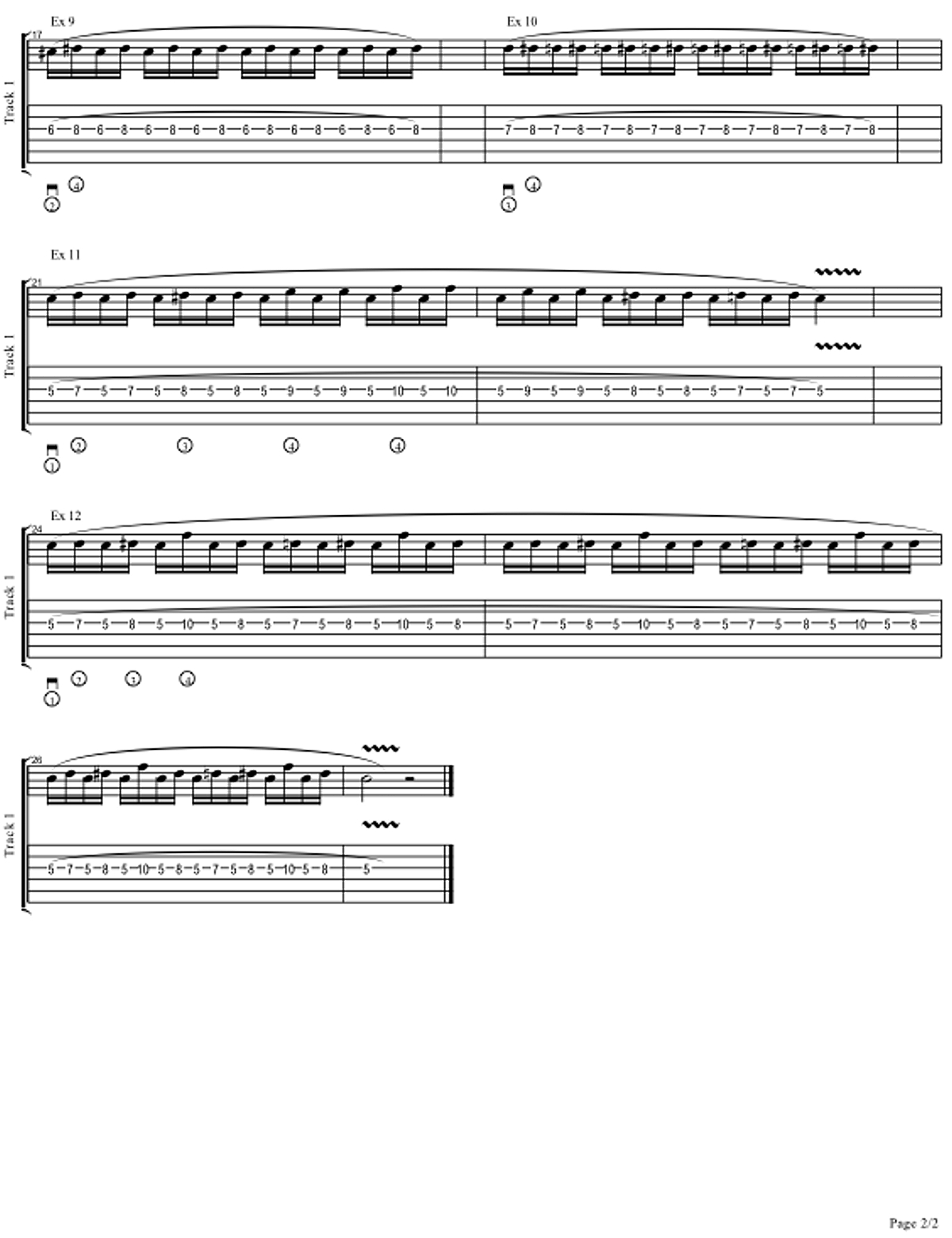When a guitar player wants to execute a fast smooth legato run, a lot of things enter into the action, such as precision, clarity and smoothness, to mention but a few. But without stamina and strength, the fretting hand won't respond and will let you down! So today we'll go through some essential exercises to tackle just that.
The first three exercises are basic trills using the first finger as a pivot and trilling with the remaining fingers. Remember that a trill means hammer-ons and pull-offs in succession. Keep the thumb lightly touching at the back parallel with the second finger. Be sure it's not pressing hard, as that would tense your arm, which in turn, slows your fingers dramatically. The exercises are written with 16th notes and are only one bar, but be sure to spend a full minute on each finger pairing. This goes for all 12 exercises!
Exercises 4 to 7 use wider stretches, so they're quite tough. Now you need to pay attention that you don't injure yourself. It's good to know that the stretched trill is the most strenuous exercise your arm/hand can go through so beware. If you feel any pain whatsoever stop immediately. The myth 'no pain no gain' is an out-of-bounds term where guitar playing is concerned. Trust me on this! Having said that, if you can handle them be sure to use the appropriate fingers I indicated.
Exercises 8 to 10 change the pivot finger. This time you'll have trills off the second and third fingers. Remember that you cannot lift at any time the finger you're trilling from. Needless to say, the third to the fourth is the toughest but if you can handle that then you're soon on your way to the 'legato stardom'.
Exercises 11 and 12 are like small licks/motifs that can be used in a solo idea, especially Exercise 12, which uses diatonic notes that can be transposed anywhere you wish. Be sure to play all 12 Exercises on all strings, so that you get the feel of every string's tension and thickness apart from moving your fretting hand everywhere. Pick only the first note of every motif you execute.
The best sound to play with is a distorted tone. The reason for this is so that you'll know exactly how much strength you need to apply to hammer/pull off. Keep in mind that when a distorted tone is being played there'll be lots of string noise and stuff happening, that if not controlled, will alter your tone and eventually create unwanted feedback. So don't practice these exercises with a clean tone if your aim is rock/metal guitar. Learning to control unwanted sound is the secret of great lead guitar playing! Keep that in mind.
So get all these exercise under your belt, and be sure to get a clean and solid hammer-on and pull-off. After all, that's what we're after here. After mastering this, you'll be ready to apply it to more advanced legato lines and runs. That should be great! But do prepare yourself first.
Remember to practice perfectly every time you... practice!


Jean-Pierre Zammit is a guitarist and instructor from Malta who has been playing guitar since the age of 14.
Zammit uses complex techniques, time shifts and scales in his writing, and always puts the song and the message he wants to portray first.
His is endorsed by Music Man guitars to use their Axis BFR models and Ernie Ball strings.